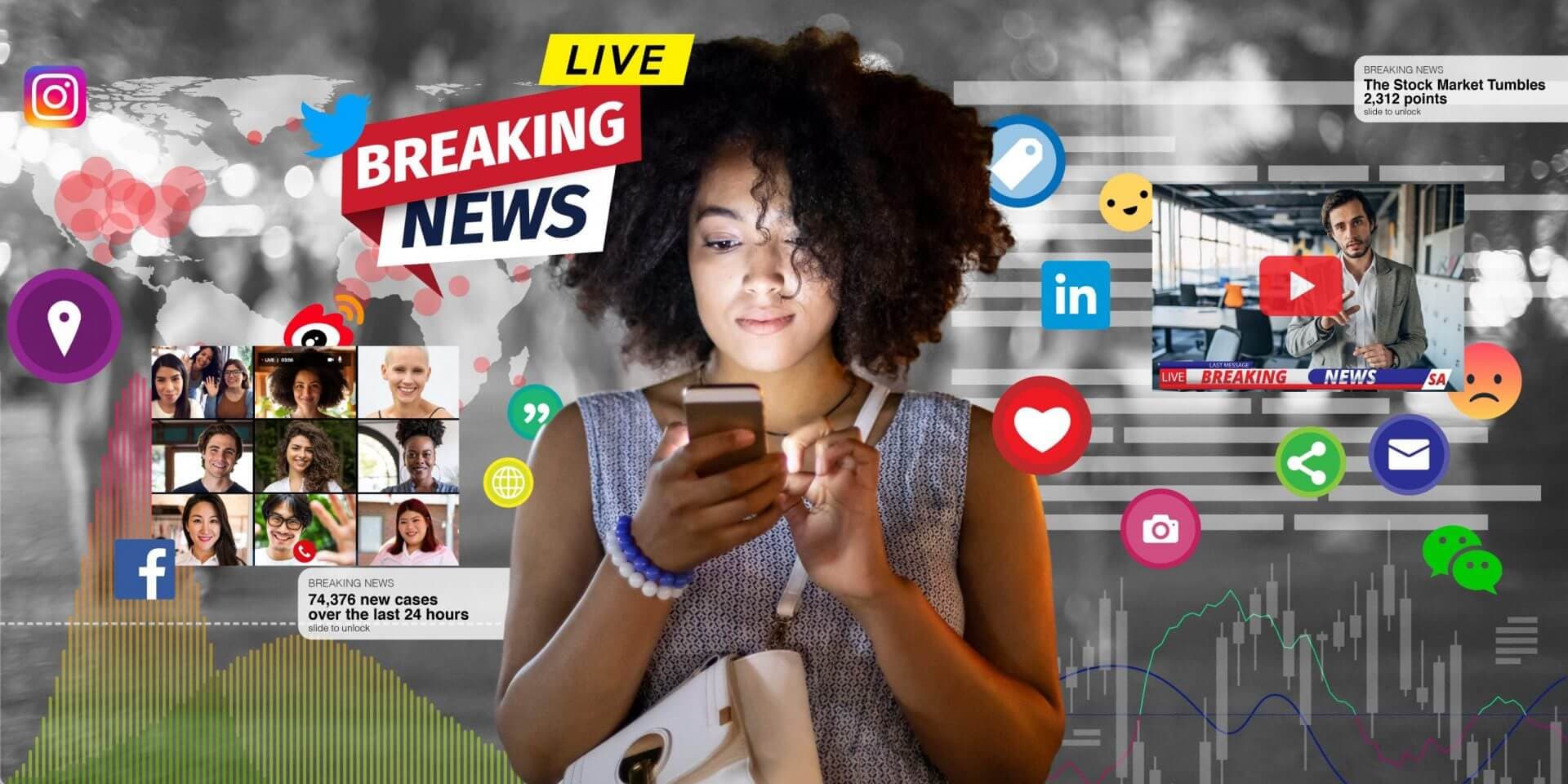So Wired, We Can’t See
Clay Shirky, new media theorist and preeminent seer, predicted long ago that the Internet would transform the way we see and experience the world. Unlike previous media upheavals, the Internet would overtake TV as the dominant medium and become our primary activity outside of sleeping and working. While directionally correct, Shirky had it wrong. It’s now the primary way we spend our time — by a large margin. We spend more time online than working (by 130 percent) and sleeping (by more than 90 percent). On average, time spent on digital video, audio, games, news sites, web pages, and social media exceeds 12 hours a day.

And that was before the world shifted to remote work and the virtualization of everything given the COVID-19 pandemic. Now that digital experiences dominate our lives, it’s our responsibility — as citizens and professionals — to understand what drives them. To be fair, staying on top of the continually shifting dynamics is not easy, but it’s necessary for those working in media, PR, and marketing.
We have a continuous learning platform, Media Genius, that dials into the world of new media. Since launching two years ago, new media effects changed the world. Disinformation and polarization clouded a presidential impeachment. The hashtag #metoo ignited one of the most significant social movements of all time. Billions of citizens under digital surveillance flattened China’s coronavirus curve. And studios like Netflix, Amazon, Disney, and Quibi bet billions on binge content — an amount almost more unreal than the fiction they created.
Our research agenda changed in light of COVID-19. The territories we follow on the edge of media are profoundly relevant in the midst of this pandemic crisis. Both formats and forums for finding reliable information are permanently amended. In less than 30 days, we’ve been informed through mediums new and diverse —including data packs, curve simulators, ER confessions, Zoom briefings, fever-detecting tech, and disinformation alerts. These point to a new pipeline of human and technical perspective agents that capture and disseminate critical, life-saving information. They’ve also exposed holes in reliable media sources — and attempts to fill. In light of gaps that organizations can fill, the following are areas we see as critical to defining a path forward.
Media Intelligence
Understanding motivations and practices of content creators becomes critical as COVID-19 overwhelms media agendas. Despite a firehose of pandemic updates (nearly 1.5 billion Google News results), conflicting and incorrect information leaves the public more divided and confused than informed. Experts like Dr. Claire Wardle, First Draft Executive Director, are on the front lines of this crisis — labeled by WHO as an “infodemic.” First Draft’s prolific output aggregates research, debunks data, and guides journalists with extensive resources to support accurate and responsible reporting. Collective research and leadership are essential as rumors — like coronavirus being created in a lab or caused by 5G technology — spread across private networks, social media, and even legitimate news outlets. The guide illustrates new voices and research updates seeking clarity.
Polyculture
This universal moment is experienced differently in a splintered cultural landscape. Depending on political affinity, digital affiliations, and cultural lenses, access and interpretation of information differ considerably. A recent YouGov poll shows the picture in contrast. It found 61 percent of Democratic respondents said they worry about coronavirus, while only 37 percent of Republicans shared this fear, and in fact, 24 percent “weren’t worried at all.” These party-line POVs reflect how deep-rooted political culture shapes opinions and even life-and-death decisions — making it impossible for businesses to ignore.
New Influence
With trust in media at an all-time low, white space exists for sources that offer reliable information and inspiration. Attention is widely diverted to a range of influencers — including industry-specific experts, journalists, celebrities, and representatives of minority and niche communities — to make sense of the pandemic and its effects. Preeminent voices of reason, including Dr. Anthony Fauci, and New York Governor Andrew Cuomo, transcend their roles as informants to become cultural icons. Experts offering clarity with real-time updates now take center stage, including Scott Gottlieb, Helen Branswell, and John Burn-Murdoch. Others in the spotlight are facing scrutiny for ill-informed intent, takes, and behavior. How individuals channel influence also takes on renewed importance.
Modern Content Canvas
We’ve seen a Cambrian explosion of new media created in the last 30 days, with plenty more innovation to come. Jimmy Fallon hosted critically acclaimed episodes of The Tonight Show from his living room. The NBA televised a virtual game of H-O-R-S-E. Churches hosted services in virtual reality. Students recreated college campuses and graduation ceremonies in Minecraft. During this period of isolation, new content brings us “together” across industries including health, education, fitness, entertainment, and even nightlife. These experiments of expression all exemplify a modern content canvas at work.
Data Ethics
Data-fueled information provides an essential path to knowledge and personalized experiences. How we ethically source this data is vitally important and increasingly controversial. In China, data tracking is a key means to prevent the spread of the virus, with the use of QR codes that indicate health and travel status to authorities. In the US, individual location and health tracking are less likely to fly. But anonymized information tools like Kinsa’s fever map, the Johns Hopkins COVID-19 tracker, and Google’s Community Mobility Reports are being widely referenced.
The relevance of each area suggests their lasting impact as we experience the great reset in media. As time continues to be dominated by online activity, no company, brand, or person can opt-out of learning and doing. Understanding our shared information systems has become critical for everyone operating personally and professionally within media.
Up leveling our collective media IQ will be important to relearn and lead a new way forward.
For a summary of the territories, their implications, and classes to go a little deeper, check out the updated Study Guide. For weekly updates on these territories, you can subscribe to our Media Genius newsletter.